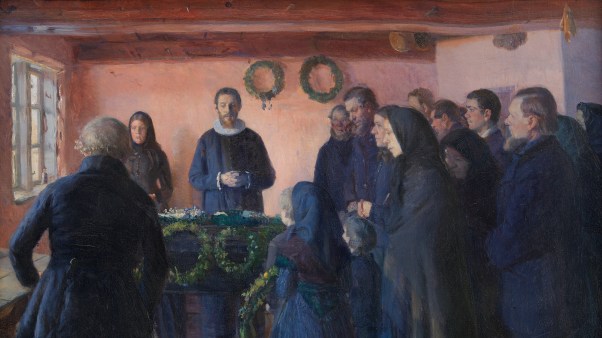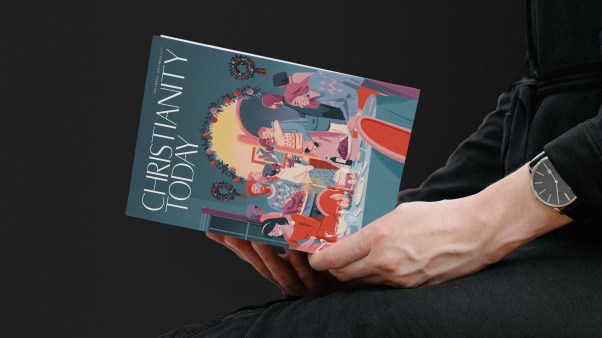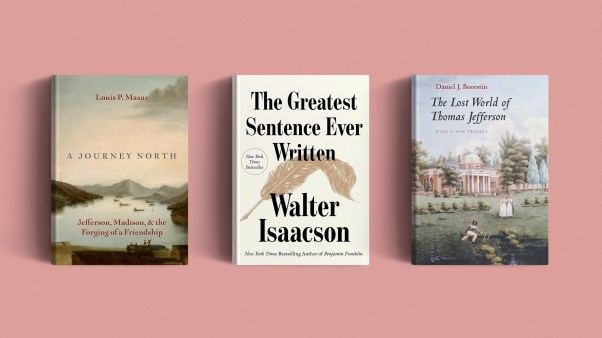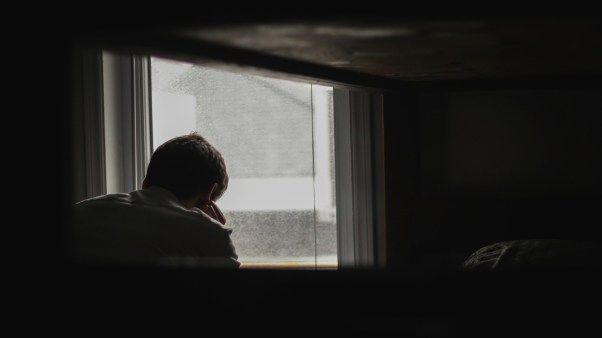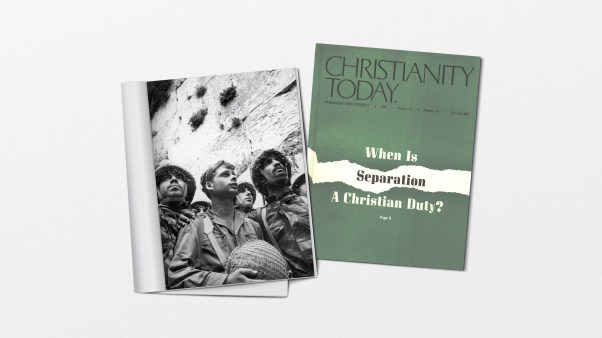There’s an old joke about the evolution of music technology that goes something like, “How many times do I have to buy the White Album?” Perhaps the move to streaming—the subject of Liz Pelly’s new book Mood Machine: The Rise of Spotify and the Costs of the Perfect Playlist—makes that question moot.
If Pelly is right that “music has been reimagined by streaming,” then despite her book’s focus on secular pop music, it has implications for the church and people of faith. And maybe we have something to offer to conversations about reinvigorating the culture of music.
At its heart, Mood Machine chronicles a music world Pelly deems “broken.” She assigns most of the blame to Spotify and the major labels. This broken system has fostered more broken ways of relating to music, which in turn breaks or hurts musicians and creativity. Pelly bases her story on “more than 100 interviews with industry insiders, former Spotify employees, and musicians.” As she chronicles the shift from piracy panic to playlist culture, Pelly argues that Spotify’s roots as an advertising company in search of internet traffic have shaped its policies and payment practices in the nearly 20 years since its founding.
Pelly ties the shift to streaming—and Spotify’s dominance thereof—to a playlist-fueled propensity for increasingly passive listening. She says the company has spent years pursuing “an elusive vision … where the Spotify user could simply open the app, press ‘play,’ and instantaneously get the perfect soundtrack for any given moment or context, without having to search, click or think.” Pursuit of this Holy Grail has helped foster listening that’s more self-centered, utilitarian, and impersonal, Pelly says, while shifting fans’ focus from individual artists to the ever-changing prescience of playlists.
Aspiring to or expecting such perfectly personalized soundtracks must be a relatively recent historical phenomenon, given all the technological developments required. But this desire speaks to the eternal human longing to be known and understood. For Christians, such longings ultimately go back to our post-Eden alienation from God. We all long for the pre-Fall intimacy God intended humans to enjoy with one another and, most of all, their all-knowing Creator.
Pelly does not acknowledge Spotify’s possibly godlike ambitions as such. She does, though, lament how the company indirectly constrains the horizons for new music. Because of its app and payment structures, Pelly says, Spotify discourages both musical experimentation and collaboration. “One independent musician told me that she felt like [the app’s hidden classifications] made musicians hesitant to change their sounds,” Pelly writes. “So many factors in Spotify’s algorithmic systems were determined at the artist level, and not the track or album level.” This might explain some of Spotify’s more jarring suggestions for my gospel playlist, which sometimes included secular music and even one patriotic song.
Paltry payments create another constraint. If you make only $0.0035 per stream, a figure to which Pelly devotes a whole chapter, it makes more sense to share that pittance with as few people as possible. (She doesn’t cite a source for this specific number, but various music distribution sites show similar rates.) Pelly closes her largely damning account of the company’s impact in grand terms. “We can’t just think about changing music, or changing music technology,” she writes. “We need to think about the world we want to live in, and where music fits into that vision.”
For all her interviews and her impressive sleuthing of even Spotify’s internal Slack channels, Pelly tells an incomplete story. At the most basic level, she gives no demographic information on the musicians she interviewed. Because she strives to keep nearly all of them anonymous, the most we ever learn is an occasional pronoun or sometimes the genre of music. This opaque treatment echoes some of the secretiveness she criticizes Spotify for.
I understand Pelly’s desire to help artists speak without fear of blowback from a powerful entity. But giving so little detail about interview subjects obscures her reporting’s strengths and weaknesses. We never learn how representative her interviews are or why she speaks so little of certain genres and musical experiences.
In a chapter on “ghost artists,” Pelly describes Spotify’s push to pad playlists with songs attributed to fake artist profiles but actually developed by a relatively small group of musicians. This practice, according to an unnamed “Spotify affiliate” she quotes, meant that “spots for Black and brown artists making this music started getting cut down to make room for a few of these white Swedish guys in a studio.” That sounds really alarming, but she offers no genre specifics or corroborating details from musicians.
In journalism, it’s standard practice to report due diligence when one doesn’t include a statement from all sides. When you can’t reach a source or that source refuses to comment, you document this so readers understand why the resulting story excludes that perspective. Other times, researchers explicitly state the limits they chose or faced. In my book on singleness, for which I interviewed nearly 350 Christians around the world, I acknowledge that I, as a Protestant, struggled to include enough Catholic and Orthodox singles.
If Pelly’s book omits or underrepresents certain genres or types of musicians, that may be perfectly valid, as long as she can give reasons for those gaps. Yet without such disclosures, readers can’t know whether her broadest claims stand up to scrutiny.
Pelly says more-instrumental genres like jazz and classical tend to fare “well on playlists for relaxing, sleeping, or focusing,” but she doesn’t address the classical music listening experience on Spotify. That’s striking, because classical music particularly suffers under Spotify’s default setting, which allows nonpaying customers to hear only albums interrupted by frequent ads—including between symphony movements—or randomly ordered playlists. This makes it very difficult to enjoy multimovement works like symphonies or concertos. When I subscribed, Spotify also suggested movements divorced from a larger work. Even the ad-based classical station in Anchorage, Alaska, (where I live) would never play music like that.
Pelly’s relative silence on classical music also stands out given its place in the long history of Western music. She closes Mood Machine by inviting readers to consider the place we want music to occupy in our world, implying that recorded music largely dictates this. But despite all the past century’s evolution, recordings remain a very recent innovation.
Perhaps that’s easier to see for Christians, whose songs and hymnody focus on a story two millennia old: Jesus’ life, death, and resurrection. When we sing the psalms, we draw on music even older than that, though only the words and occasional music notations remain. Because of that, music plays a profound role in reminding the gathered community who and whose we are. (Perhaps this is why songs re-encountered during exile to Babylon caused such pain for the Israelites, as Psalm 137 describes.)
Singing is one of the most basic and perhaps universal ways that humans make music. Corporate singing, in particular, provides one of our best opportunities to experience community in the unity and diversity that God intended. In communal singing, we both unite our voices and, when we sing in parts, demonstrate through harmony the great beauty created by our diversity.
The local church is probably one of the most enduring settings where people who vary greatly in skill sing and make music together. That arguably makes the church one realm where music hasn’t suffered as much. Yet church music plays no part in Mood Machine. (The only religious reference I found involves an “anti-Christian song.”)
It may be that, in many cases, “artists’ careers have become increasingly managed by algorithms, and listening has become more and more mechanized.” But that simply doesn’t account for the weekly musical life of churches all over the country and around the world, dozens of which I worshiped with during fieldwork for Solo Planet. From Handel’s Messiah to Jon Batiste, church music has long influenced the broader culture. Its exclusion from Pelly’s account limits the force of her argument.
At the end of Mood Machine, Pelly writes, “To address the root causes of our ailing music culture, we need to have deeper conversations about why music matters, why universal access to music matters, and what systemic political and economic realities currently prevent so many people from engaging deeply with music.”
Surely such a conversation ought to include more of the places where music thrives. Her conclusion lists some very interesting examples, especially of library-hosted music collections. But it’s worth considering others from the Christian music scene. Pelly might have reckoned with how Josh Garrels gives so much music away. Or she might have highlighted The Porter’s Gate, an arts collective responsible for a steady output of new songs, almost entirely digital, through an unusually large team of collaborators. How have these Christian musicians survived what seems like such risky generosity and collaboration?
By the same token, Christians could stand to heed the problems Pelly so meticulously chronicles. Many schools have ended or reduced music education in the classroom. But years ago, I attended a church whose worship minister believed the local church could help fill this gap, perhaps by teaching people how to sing parts. The church I presently attend (and play piano for) also supports broader cultural efforts to preserve and reclaim Indigenous languages by including some translated songs in our worship.
Churches can provide space to practice or perform as well. The Lutheran church where I worship rents its space to multiple community choirs for rehearsal. Others sometimes come to play one of the many pianos in the building—either for practice or just for fun. Historically, church support of musicians has also given some the financial stability to produce other work. Individual Christians have an important role too.
Reading Pelly’s book made me realize that for all the money I spent on Spotify the past few years, I had not bought a single song from my most-played playlists. When I first started using Spotify, I was doing international fieldwork and had almost no access to the music I loved. Like library ebooks, Spotify initially helped connect me to home, in some sense.
Once I settled in Anchorage but still had most of my huge CD library in storage, Spotify provided a way to stay connected to music. After discovering The Porter’s Gate in early 2020 and later building out my worship and gospel playlists, the app helped extend much older habits of compiling lists of recordings I might gradually acquire. Over time, I lost sight of that goal.
Today I finally changed that by buying a few of those songs as MP3s. Over time, I hope to buy more music again, while continuing to support local arts too. Although few of my favorite acts come through Anchorage, life here has taught me the importance of supporting local musicians. Unlike my prior stints in New York and San Francisco, Anchorage has far fewer concert options each week—particularly for ensembles like orchestras. Many community groups offer just a few concerts a year. That’s okay. In reality, I’ve rarely attended more than one or two per month, no matter where I lived. Now I just have to work harder at attending the concerts we do have.
These days, my biggest barrier to supporting music is low income. But I’m grateful to the church choir that lets me practice with them each week, despite rarely attending their services. Some secular choirs here charge singers to participate!
And when a compassionate house manager recently bought me a ticket to a concert I couldn’t afford to hear, it reminded me of another long-term goal. As my post-book career hopefully stabilizes at a higher income level, I want to be someone who introduces others—especially younger people or those who can’t afford it—to the music that’s brought me such joy. What could you do to bring more flourishing to the music and musicians in your community?
Anna Broadway is the author of Solo Planet: How Singles Help the Church Recover Our Calling and Sexless in the City: A Memoir of Reluctant Chastity.










